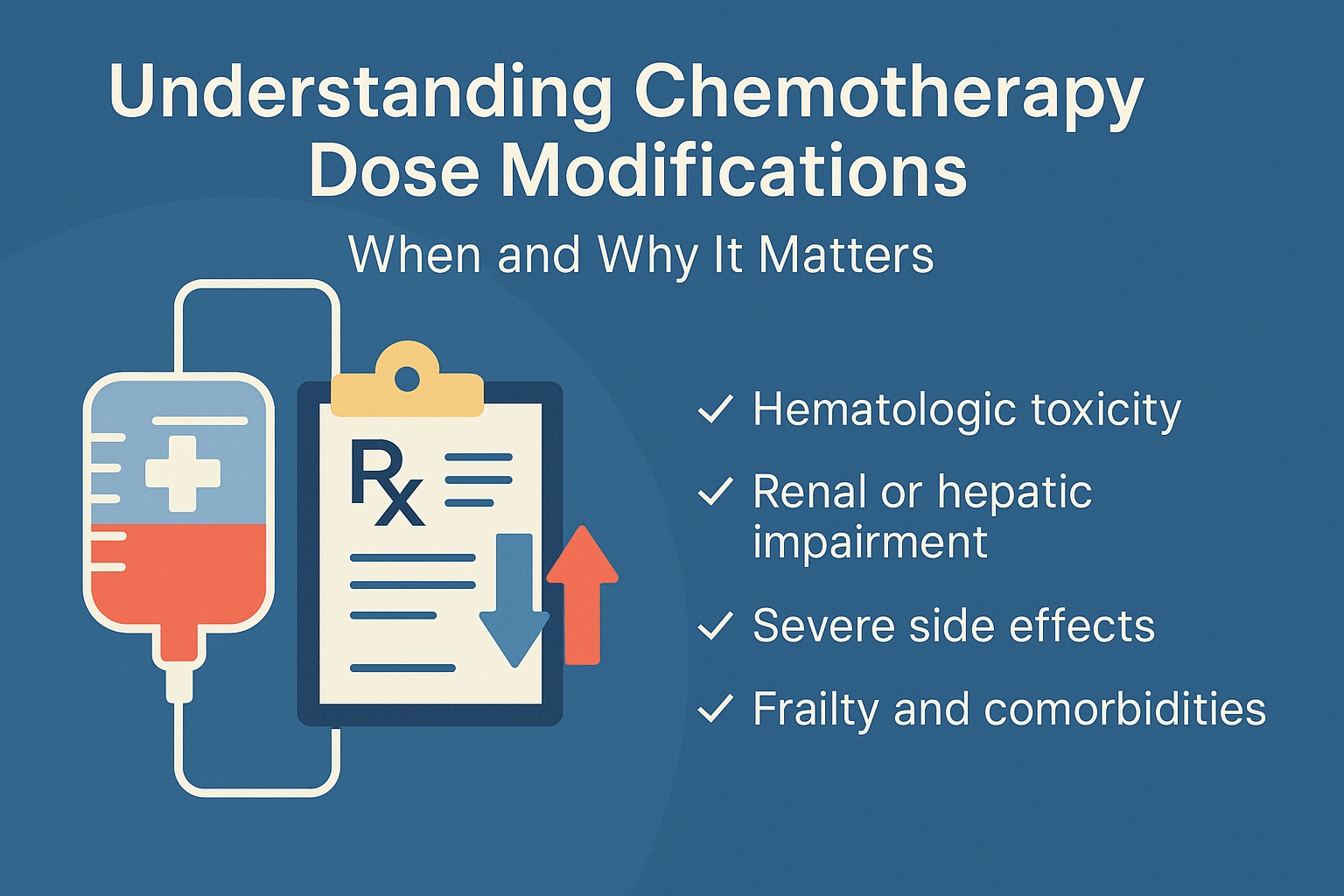Understanding Chemotherapy Dose Modifications: When and Why It Matters

Personalizing Chemotherapy Without Compromising Safety
Chemotherapy regimens are designed around population-based trials, but real-world patients rarely fit textbook scenarios. Differences in organ function, comorbidities, tolerability, and response all play a role in treatment outcomes — which is why dose modifications are a routine part of oncology practice.
But when are dose changes appropriate, and how do we ensure they are done safely and consistently?
What Are Chemotherapy Dose Modifications?
Dose modifications refer to any intentional change from the standard protocol dose — including:
- Dose reductions
- Dose delays
- Cycle omissions
- Drug substitutions
These adjustments can be temporary or permanent and are often made in response to toxicity, organ function decline, or cumulative dose concerns.
Common Reasons for Dose Modifications
- Hematologic Toxicity: Low neutrophil or platelet counts often require delaying or reducing chemotherapy.
- Non-Hematologic Toxicity: Severe fatigue, mucositis, diarrhea, neuropathy, or liver enzyme elevation.
- Renal or Hepatic Impairment: Drugs eliminated through kidneys or liver must be adjusted as lab values change.
- Age or Comorbidities: Frail patients may not tolerate full doses.
- Prior Adverse Events: Previous severe toxicity may prompt permanent reductions.
The Clinical Challenge: Balancing Efficacy and Tolerability
Underdosing may compromise cancer control. Overdosing increases toxicity. The decision to modify doses is nuanced and must weigh:
- Disease aggressiveness
- Response so far
- Patient goals (curative vs. palliative)
- Predicted benefit vs. risk of side effects
How Altai Oncology Supports Dose Modification Decisions
The Altai Oncology Suite is designed to help oncologists make dose adjustments confidently and safely:
- Cycle-by-cycle dose tracking: View dosing changes and justifications.
- Built-in dose validation: Flags out-of-range doses and requires reasoned overrides.
- Organ function integration: Renal and liver values help guide adjustments.
- Cumulative dose warnings: Tracks long-term safety for agents like anthracyclines.
- Team visibility: Final orders are accessible with audit trails for all roles.
Conclusion: Precision Oncology Isn’t Just About Genomics
True personalization in oncology also means individualizing chemotherapy doses based on patient needs. With structured digital systems like Altai, oncologists no longer have to rely on memory or sticky notes. Every change is calculated, documented, and traceable — improving both safety and outcomes.
